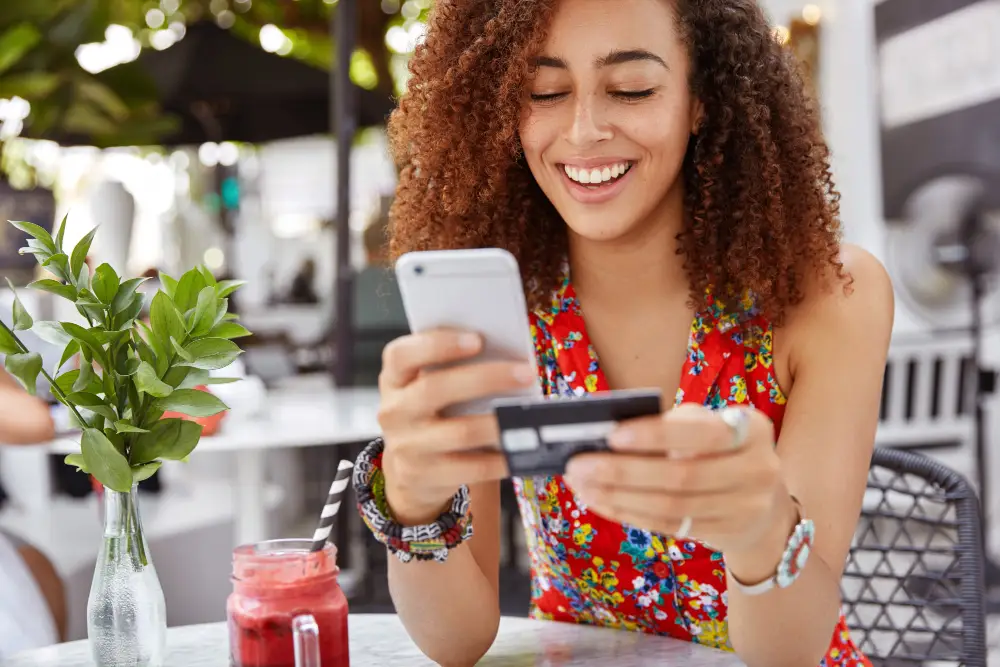Customer loyalty techniques evolve regularly, according to progress in marketing technologies, changes in customer expectations, but also sometimes according to less predictable trends, linked to the economic situation.
In the long term, loyalty strategies evolve to integrate new technical possibilities (data management, personalization solutions, etc.) but also new expectations from customers in terms of brand experience and journey.
Added to these developments are more cyclical changes, which loyalty strategies will have to take into account: pressure on consumers’ purchasing power in 2023, increasingly strong expectations on brands’ CSR commitments, changes in of consumption…
Loyalty strategies must therefore constantly adapt. At the dawn of 2023, let’s take a quick look at 5 major trends in the evolution of loyalty techniques to be anticipated by loyalty consulting agencies and marketing managers.
1. Loyalty programs support consumers’ purchasing power
As we mentioned in detail in this article, inflation and pressure on purchasing power being very present topics in 2022 and 2023, marketing, and in particular the means of loyalty, will have to integrate provisions allowing brands to compensate for higher prices in the eyes of consumers, and in particular for their most loyal customers.
By definition, the levers of loyalty programs play
- either on cost reduction:
- cash back
- Accumulation of loyalty points with an exchange value
- upgrade
- either on the increase of the “value for money”
- exclusive advantages, reserved for customers
- services included to improve the shopping experience
- tailor-made advice and support
Depending on the context, brands will therefore have to play on one or other of these levers.In times of pressure on purchasing power, the stakes are vital: it is a question of maintaining its market share and retaining its best customers, by distinguishing itself from the competition. Using the loyalty program to display generosity in a period of declining purchasing power can even be an opportunity to increase the base of customer members of a program, and therefore to work on long-term marketing, as opposed to specials.
Some loyalty programs like AXA ReBons play quite directly on this notion of boosting purchasing power, with great success.
2. Customer loyalty requires CSR commitments and communication on these commitments
Corporate social responsibility (CSR) is the way companies integrate social, environmental and economic concerns into their activities and their relationships with stakeholders. This includes environment, community, employee initiatives and ethical business practices.
Customer loyalty is increasingly linked to corporate CSR. An OpinionWay survey by Salesforce and Les Echos confirms that the majority of consumers (63%) are increasingly attentive to the values and commitments of companies. This trend has increased since the start of the Covid crisis. This sensitivity to brands’ CSR commitments influences customer loyalty: 71% of people surveyed say they are loyal to brands that uphold values in which they identify, in terms of environmental protection, solidarity, open-mindedness, etc. . The relationship between a customer and a company is not limited to the reflection and the sale of products and services. Trust is built before, during and after the purchase at all levels of the value chain
Let us give three examples illustrating the link between loyalty and CSR, in three different sectors:
- Among the consumer brands, let’s mention Panier de Yoplait, which has created a relational program, “Let’s free a world of flowers”, to associate consumers with its commitments in favor of biodiversity. Consumers were encouraged to create an account, then to consult and share educational content in order to earn points and thus in particular a draw… to win experiences in connection with nature or eco-designed products, in connection with the protection of bees
- In the energy sector, loyalty is one of the traditional marketing levers. In a context where the link between energy consumption and environmental impact is increasingly evident, the Engie brand, with Mon Programme pour Agir, has decided to offer a loyalty program to reward its customers while being part of a environmental responsibility approach. Thus customers are not rewarded according to their expenditure, but on the contrary, according to the sobriety of their energy consumption! Seemingly paradoxical, this approach is logical and very well understood by customers, whose link to the brand will be strengthened. This is all the more profitable since in the energy sector, opportunities to interact with customers are infrequent.
- Finally, in the distribution sector, the Decathlon brand is a perfect example of how a brand must adapt its offer (and its marketing) to adapt to the desire of its customers to consume in a more virtuous way. Thus, as this article from the Hub de La Poste presents, the brand is now promoting repair or rental services, in order to encourage a “circular economy”. It is a way of retaining customers who, otherwise, could have turned to other offers for sports equipment and leisure.
Far from being isolated, these examples of marketing strategies reconciling loyalty and communication of CSR commitments are a strong trend, affecting more and more brands.
3. Product quality and customer service
Product quality
This is not new, the quality of the product and the after-sales service are essential factors in customer loyalty. The importance of product quality is reinforced by changes in consumer habits, increasingly oriented towards durable goods. More sober, consumers prefer to pay a little more for the purchase of products that they can use longer.
According to a study by We Are Com, for 48% of consumers, it is the quality of products and services that takes precedence in the act of purchase. For this reason, building brand awareness and a quality image is essential to build trust and loyalty.
Customer service management
Customer service is a major component of loyalty marketing, before and after the purchase.
Before the purchase, it is a question of guiding the user in his journey. The accessibility and responsiveness of customer service are essential. To reassure the customer or provide him with information concerning the product and its availability. A few good customer marketing practices, which we detail in this article, can improve your loyalty potential.
The furniture brand Ikea thus offers design workshops, to support customers in the design of their kitchen or their interior, and then facilitate their purchases.
After the purchase, the quality of customer service is even more essential for loyalty. Customer service must make it possible to effectively ensure a return, a technical problem, a question about the product. This is where most customer satisfaction comes into play and what the customer will remember the most. A customer disappointed with their order could even become a brand advocate if customer service made up for that disappointment.
The customer loyalty consulting agency Dékuple has thus designed and made available to the agents of the Postal Bank a platform allowing them to send a gift to a customer, with different levels of value.
Simplicity of the buying process
Offering customers a smooth, easy journey is an excellent way to retain them. The customer wants to save time, to be accompanied. Designing an optimized UX interface with a web design agency like Dékuple makes it possible to reconcile originality in the journey, and therefore the emotional impact of the customer, and efficiency, i.e. less frustration.
Payment is a key step in this journey. Many technological innovations have recently made it possible to optimize this step from the point of view of the consumer, as this article from the Hub illustrates. And it’s not over: with the anti-waste law, it will soon no longer be authorized to give a receipt, unless explicitly requested by the buyer. This should then encourage dematerialized sending by email or SMS, which offers one more opportunity to promote a loyalty program!
Omnichannel customer journey
Omnichannel is a marketing strategy that aims to provide a consistent and consistent experience for customers regardless of the channels they use to interact with a business. For example, if a customer purchases a product online from a website, they can return or exchange that product at a physical store. The goal of omnichannel is to make the customer experience as smooth and enjoyable as possible. In 2023, with increasingly reliable customer data centralization systems, retail and distribution companies will have to offer seamless journeys between physical stores and e-commerce sites. Loyalty programs, for example, should make it possible to collect and use points both online and offline, without distinction.
Personalization
69% of customers say that personalizing a service has an impact on their loyalty, and 84% of them say they are ready to stop buying brands that do not respect their tastes and past purchases. More than ever, in 2023, the personalization of the customer-brand relationship remains an expectation and a condition of customer loyalty. This is reflected, for example, in the personalization of the content of newsletters sent to customers. Decathlon provides an excellent example of this personalization, by offering products corresponding to the favorite sports of customers registered in its program, or according to their purchase history. Personalization is the brand’s best argument for collecting data on its customers.
4. Brand experience and “emotional loyalty”
Beyond the purchasing experience, the customer’s experience with the brand is also a loyalty factor, which tends to be reinforced.
For example, Bouygues Telecom regularly offers experiences for its customers, or for some of its customers. Thus, in 2021, with its Happy @ Home campaign, during confinement, Bouygues Telecom offered all its customers online training in an area of their choice, in order to occupy their time at home. These campaigns allow the brand to retain customers through a stronger emotional connection to the brand.
Brands can also offer other experiences, related to their products, but not directly related to the purchase.
For example, Ikea offers members of the Ikea and Family program events and workshops very regularly, always adapted according to the season. In December 2022, members of the program are thus invited to come and celebrate Saint Lucia on December 17, or to workshops (creating a wreath, a gingerbread house, holiday table, etc.).
Another example, even more experiential, but still in the field of furniture and decorative items: Maisons du Monde has opened boutique hotels, called Maisons du Monde Hotels & Suites. An excellent way to be part of special moments in the lives of customers, their vacation stays, while offering an immersive experience in a place to stay that highlights the brand’s designs.
5. Build loyalty by emphasizing more proximity and human connection
The customer relationship is evolving more and more to integrate the human link. It is a marketing strategy that makes it possible to reconcile business agility, quality of service and customer expectations for a less cold and automated relationship.
In a survey by Viacom and We are Com, it appears that for 72% of respondents, it is important for brands to understand their customers. This proximity allows them to gain more trust from their customers.
Thus, a brand like Darty has remodeled its customer service to rely on its salespeople. They now have the tools and the autonomy to answer customer questions directly online, via chat or on social networks.
In this logic of proximity, AXA has focused on local roots, by allowing its general agents to distribute gift vouchers to be used at local merchants, themselves AXA customers. This system makes it possible to retain customers, both individuals and professionals, by strengthening the link with their agents.



